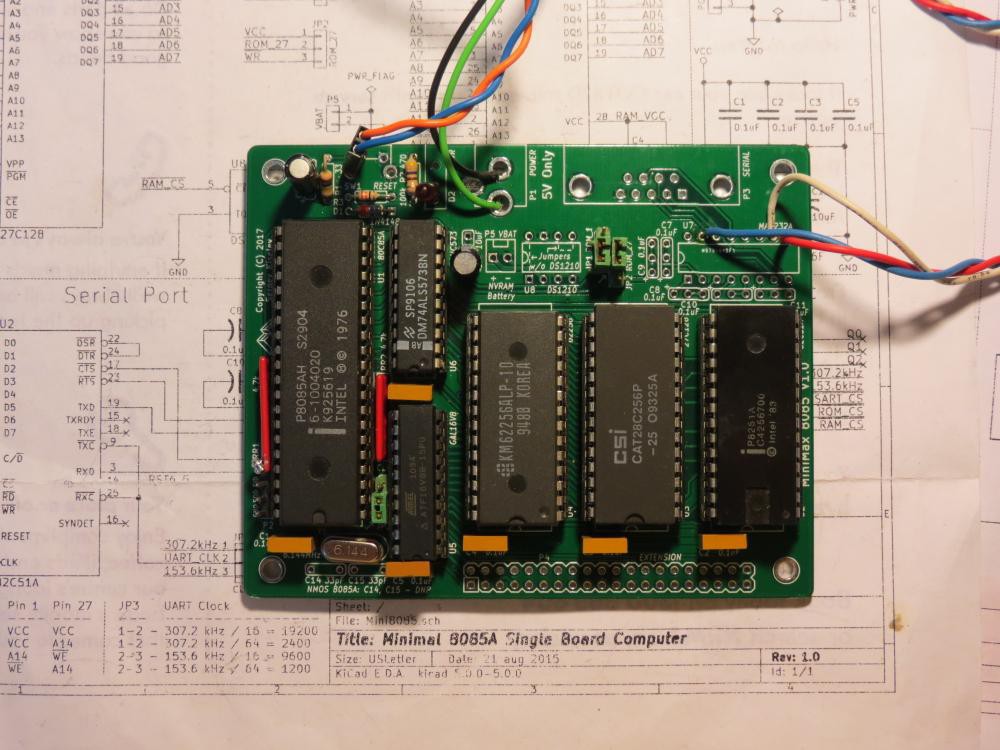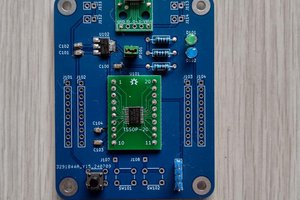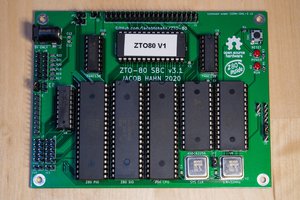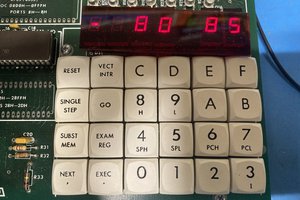A short history of the 8080 and Z80 8-bit CPUs
First came the 8080. This required 3 power supplies and had a cumbersome set of clock pins, so much so that there was a separate chip available, the 8224, to drive it. Intel realised that this was putting designers off so they produced the 8085 which only required a +5V power supply and simpler clock circuitry. However the Z80 with its far more capable instruction set eclipsed the 8080/8085 in personal computers. Although software like CP/M and apps mostly stuck to the 8080 subset of instructions for complete coverage. The 8085 was used in many embedded controllers. It did have the advantages of a serial interface and prioritised interrupts.
I have quite a few 8085 chips in my collection so I decided to put them to use. This time though I didn't design the circuit but adopted the Minimax 8085 design by Sergey Kiselev. (I have linked to the Retrobrew Computers wiki page, which has working download links, but Sergey's original page has code samples.)
Goals of this project
- Get acquainted with ordering PCB fabrication over the Internet
- Learn about using GALs, as this SBC uses one to implement the glue logic
Attempt to port the SDCC to generate the 8080 instruction setI have decided to assign this to its own project as it's quite an undertaking
 Ken Yap
Ken Yap





 Jacob Hahn
Jacob Hahn
 Savo
Savo
 jimshortz
jimshortz
Hi Ken, I'd be interested in buying one. I'm Sydney based.